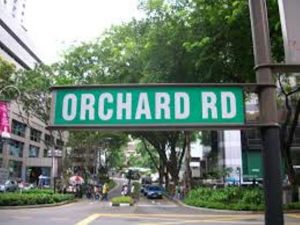Retail rents has declined 2.5% on average for Orchard Road and Regional Centres in H2 2020, while Industrial property market’s overall occupancy improved by 0.7 ppt in 2020 to 89.9%, driven by warehouses on increased stockpiling and e-commerce activities
- Retail rents declined 2.5% on average for Orchard Road and Regional Centres in H2 2020.
- Retail rents expected to remain flat in 2021, as landlords rejig tenant mix while future supply is benign
- Retail property transaction volume jumped 820% HOH in H2, bringing the full-year transactions in 2020 to SGD2.9 billion, reflecting a 29.5% YOY decline.
- The Industrial property market’s overall occupancy improved by 0.7 ppt in 2020 to 89.9%, driven by warehouses on increased stockpiling and e-commerce activities.
- Demand for business parks and hi-spec spaces to be supported by the thriving technology sector and biomedical manufacturing.
- Warehouse rents to rise 1.3% YOY in 2021, while factory rents could stay flat on ample supply.
 Colliers International on 25th February published two research reports which examine the market performance of the retail and industrial property sectors in the second half of 2020 (H2 2020) and its projections for both sectors.
Colliers International on 25th February published two research reports which examine the market performance of the retail and industrial property sectors in the second half of 2020 (H2 2020) and its projections for both sectors.
Colliers Research notes that the retail property market is expected to stabilise in 2021 and recover gradually thereafter, while the industrial property market is set to recover on the back of strong demand in logistics warehouses and hi-specs space.
Retail
Based on Colliers Research, ground-floor rent on Orchard Road declined 2.6% HOH in H2 2020 to SGD37.24 per sq foot per month, while that of Regional Centres declined 2.3% HOH to SGD31.68 per sq foot per month. This brings the full-year average retail rental decline to 7.2% YOY, the worst in our record.
Jonathan Denis-Jacob, Director, Head of Consulting and Advisory Services, said, ” Brick-and-mortar retail will remain relevant and is here to stay, especially for global retailers. While we saw several high profile retail brand closures, although not all these were strictly related to Covid-19, we also saw some resilient brands quickly backfilled these vacated space with new concepts. The delivery format and the evolving experience to consumers will continue to change. We have seen a rapid take-up of a large prime retail footprint despite the ongoing pandemic. For example. the three former Robinsons’ spaces were taken over very quickly by major retailers for their concept stores such as IKEA at JEM, and more recently, BHG at Raffles City and Courts at The Heeren.”
With the easing of restrictions, retail sales saw an improvement to a 4.5% decline YOY in December, as supermarkets, IT products, furniture/household products and sporting goods record double-digit sales growth. The recovery is, however, uneven among different trades.
“With this uneven recovery, landlords will rejig tenant mix and pivot their strategies leading average retail rents to remain flat in 2021. Rents could improve thereafter with widespread virus containment and resumption of travelling,” said Tricia Song, Head of Research for Singapore at Colliers International. “
A saving grace is the limited 2021-2025 islandwide supply at 0.8% of total stock p.a. vs the 10-year historical average of 1.1%. In addition, the new supply is mostly concentrated in suburban and fringe areas, where there are well-defined population catchments.”
Investors’ confidence in the Retail property market remains strong despite the industry going through one of the worst retail crisis in history as full-year transaction volume in 2020 reached SGD2.9 billion, reflecting a 29.5%YOY decline.
Report Highlights:
- Islandwide net absorption in 2020 fell to a record low of ‐1.7 million sq ft from the impact of Covid‐19. net demand expected to turn positive in 2021 as the economy reopens while supply remains muted.
- 2020 saw a net withdrawal of 1.0 million sqft of stock as some malls undergo refurbishments. New annual supply over 2021‐2025 is benign at 0.8% of stock versus the past 10‐year average of 1.1%.
- Ground‐floor rents were down 8.4% and 5.7% at Orchard Road and suburban Regional Centres, respectively, in 2020. As tenant mixes are rejigged, overall average retail rents expected to stay flat in 2021.
- Island‐wide vacancy rose 1.3 ppt in 2020 as lockdowns and safe distancing measures hurt retail sales. Vacancy should improve gradually to 8.6% in 2025 as the economy recovers.
- Retail transactions fell 29.5% YOY in 2020, while capital values declined 5% given disrupted income. Capital values expected to remain flat in 2021.
Insights & Recommendations by Colliers International:
“Average Orchard Road and Regional Centre rents declined 2.5% in H2 2020, bringing the full year decline to 7.2% as net absorption hit a record low. We expect demand in 2021 to turn positive as the economy reopens. However, even as foot traffic and tenant sales have recovered to 60‐97% of pre‐pandemic levels by end‐2020, we expect an uneven recovery among trades. Hence rents could remain flat in 2021, as landlords rejig their tenant mix and future supply is benign. Retail transaction volumes fell 29.5%, while capital values on Orchard Road slid 5% in 2020 due to disrupted rental income.
“We recommend resilient retailers upgrade to prime locations and leverage online channels; landlords should digitalise while providing safe shopping experiences.”
Industrial
Singapore’s Industrial property market was relatively resilient in 2020, with the JTC rental and price index declining 1.5% YOY and 2.7% YOY, respectively, while all industrial occupancy increased by 0.7ppt to 89.9% in 2020.
Overall, Colliers Research expects a recovery in 2021, with warehouse-logistics rents growing 1.3% YOY and the thriving technology sector and biomedical manufacturing supporting demand for business parks and hi-spec spaces, while factory rents could remain flat with ample supply.
Ms Song said, “Warehouse rents had surprisingly declined in 2020, albeit marginally, despite higher take-up. This could be due to landlords prioritising occupancy over rents, especially during a period of crisis. Sustained demand for e-commerce and tighter occupancy should support rental growth for the logistics space in the next few years.”
Steven Tan, Senior Director, Investment Services added, “As net yields for Singapore industrial/logistics properties remained stable in H2 2020 at 5.75-6.25%, there is an increasing interest from property funds and REITs for industrial assets, particularly for the logistics warehouses and hi-specs space such as data centres.”






